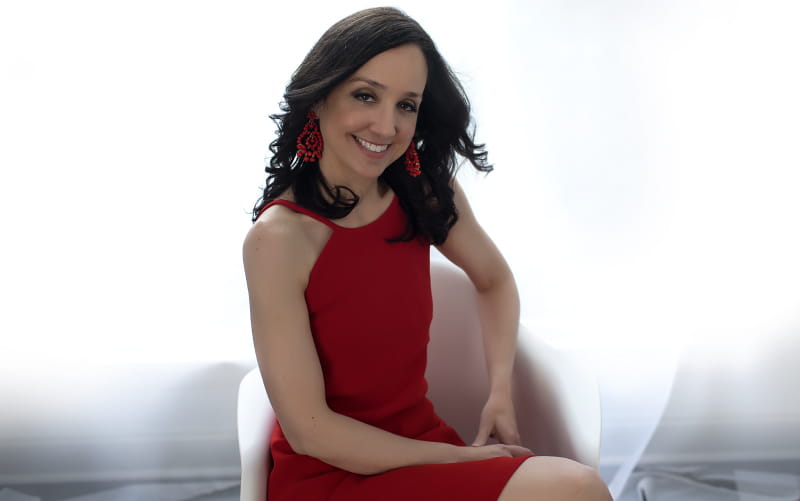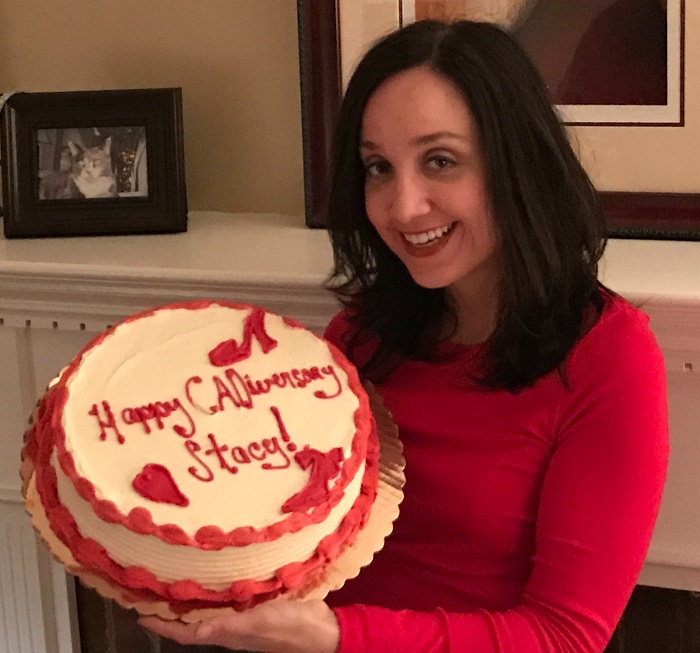After mini-stroke at 41, she's on a mission to educate others
By American Heart Association News

During a meeting in their Manhattan office, Stacy Quinn was trying to tell her supervisor, “Gill is working on the project.”
“Are you OK?” her boss said, having heard Quinn utter an unintelligible slur.
Quinn said she was fine, although she knew that wasn’t totally true. That morning in December 2014, she’d experienced, “the worst headache of my life.”
Later that day, following another “speech blip,” she and a colleague looked up her symptoms online. They figured the problems stemmed from a migraine, possibly caused by stress.
“We saw information about strokes, but we dismissed it because we thought that’s just something for old men,” she said.
Over the next week, Quinn went twice to an urgent care facility, receiving first a diagnosis of migraines, and, later, an ear problem. Ten days later, still having monster headaches, she sought a neurologist.
Nothing unusual, he told her.
But, he added, “I like to leave no stone unturned.” So he ordered an MRI and an MRA, which looks specifically at blood vessels. The day after the tests, the neurologist called her.
“You’re going to have a stroke,” he said. “Get to the hospital now.”
The tests had shown that Quinn had already had a transient ischemic attack, also known as a mini-stroke. It is often a warning sign of a looming massive stroke.
In her case, the risks were higher still because she’d suffered a spontaneous carotid artery dissection, which is essentially a tearing inside one of the main pathways delivering blood from the heart to the brain. She was fortunate to have “only” a 90 percent blockage of her left carotid artery.
At New York-Presbyterian Hospital, which has a comprehensive stroke center, doctors decided to treat her with medication because they feared an operation would be too risky.
“They said as long as I followed doctor’s orders and took medication, I would improve over the course of time,” she said.
They were right. The blockage eventually was reduced to 40 percent.
“I learned that I was among the one in 100,000 people each year who have a carotid artery dissection,” she said. “But the other thing I learned is that strokes don’t just happen to older men, but also to women, young people and even babies. Also, they’re becoming increasingly more common in younger people and women.”
Seeing as she was 41 and, before the stroke, had felt “super healthy and fit,” she returned to work within a week for “a sense of normalcy.”
It was a mistake.
Although she felt very vulnerable and was still limited physically, unable to lift things over her head or “basically anything that could put pressure on my neck,” she still looked like her old self. So many people treated her as if nothing had happened.
“I had a family member who said, ‘You’re fine, get over it,’” Quinn said. “I didn’t have the support system I needed.”
Trips to a therapist didn’t help, though seeing a life coach assisted with reducing stress.
“I’m an extremely type A person, especially at work, and I had to dial it back, which was really hard,” she said.

A few months later, a friend took her to a luncheon for New Jersey Go Red for Women, the American Heart Association’s national movement to end heart disease and stroke in women.
Initially, Quinn was reluctant to discuss her experiences. But meeting several Go Red Survivor Ambassadors inspired her to become more involved. One of those ambassadors was Janice Recca, a survivor of open-heart surgery.
“Janice let me talk – and no one had just let me talk about everything I was feeling,” Quinn said. “She said, ‘You know what, Stacy, it’s totally normal that you feel this way now.’ It made me realize that having a network is so important.”
Quinn, who lives in Belleville, New Jersey, has joined Recca as an ambassador.
“Stacy’s story is so significant because a lot of people don’t think about stroke for younger people,” Recca said. “I’ve been so happy to see her really blossom and embrace her role as an ambassador because she is able to help so many other women.”
Quinn also volunteers at various AHA events and serves as a member of the organization’s Government Relations Committee for New Jersey and the Executive Leadership Team for the Northern New Jersey Go Red for Women campaign. In 2018, the AHA awarded her a Go Red for Women “Woman of Distinction Award.” She also, a year earlier, received a “New Jersey Stroke Hero Award” for spotting stroke symptoms in a coworker, who uncannily had a situation similar to Quinn’s.
Quinn said her goal in sharing her story and doing advocacy work is “to change the face of stroke.”
“But I have to say that it’s still not easy reliving that moment,” she said. “Sometimes I want to forget and move on, but this is my way of turning something bad into something positive.”
Stories From the Heart chronicles the inspiring journeys of heart disease and stroke survivors, caregivers and advocates.
If you have questions or comments about this story, please email [email protected].




